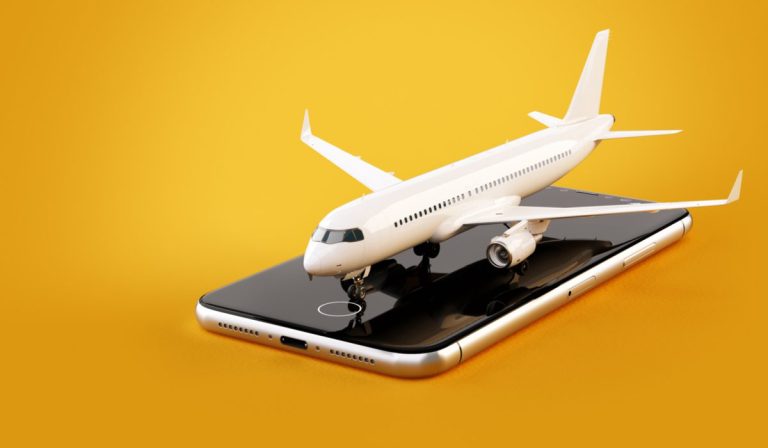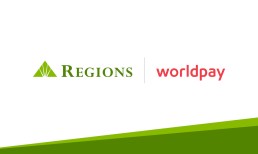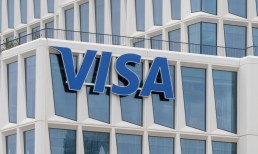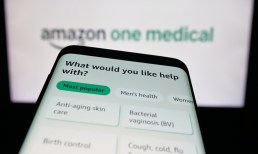Get the report: The ConnectedEconomy™ Monthly Report
That was a 14% increase from the previous month. In March, 29% of consumers went online to perform an activity related to either travel or transportation.
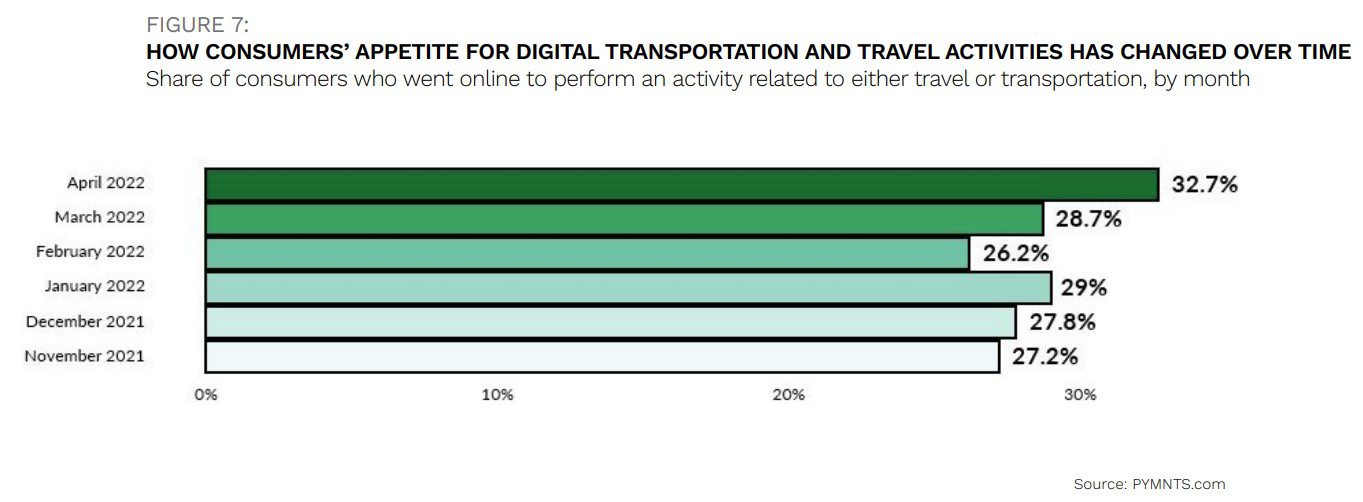
The most common ways in which consumers use the internet to inform and enable their travels are monitoring traffic or locating the best routes, obtaining travel information, locating gas stations, comparing gas prices and booking a hotel.
In April, the shares of consumers who engaged in those digital transportation or travel activities at least once during the month were 52%, 42%, 38% and 36% respectively.
[insert Figure 8 here please]
Advertisement: Scroll to Continue
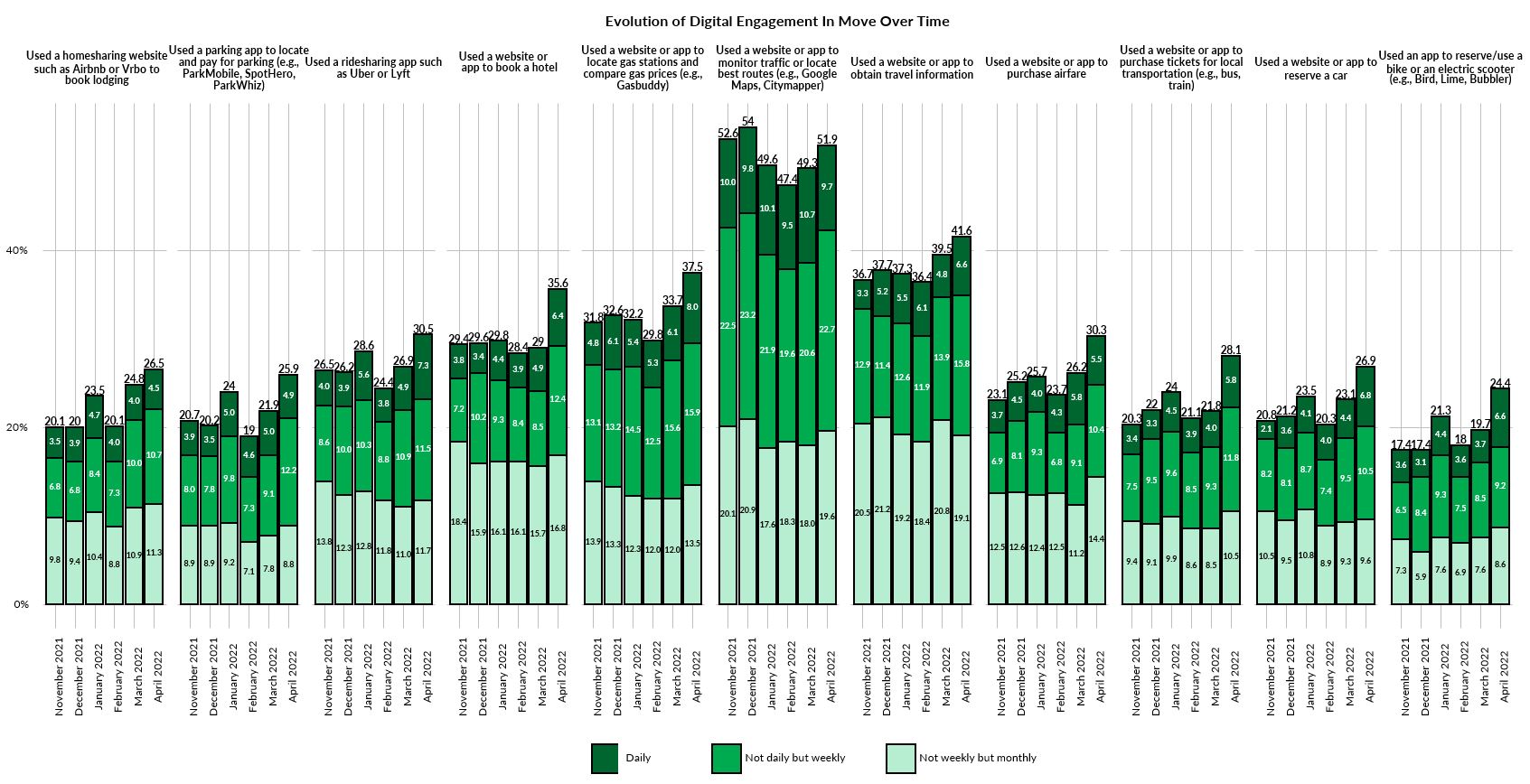
The increase in travel activity coincides with widespread lifting of both the mask mandates and the travel restrictions put in place to slow the spread of COVID-19.
The share of consumers going online to book hotels increased 23%, strongly indicating that consumers are taking the opportunity to travel.
The share of consumers using the internet to inform their daily commutes — such as by monitoring traffic or comparing gas prices — shows how deeply accustomed consumers have become to using the internet to inform what were once strictly physical routine activities.
This also shows that the future of the ConnectedEconomy™ and its staying power are enduring beyond the pandemic-caused lockdown that accelerated the digital transformation.
While consumers are taking advantage of their renewed freedoms to explore the world outside their homes, they are not doing away with the digital habits they acquired during the early days of the pandemic.
In fact, more consumers than ever are using the internet to inform their real-world experiences. In the case of travel and transportation, more travel is leading to greater digital engagement.
